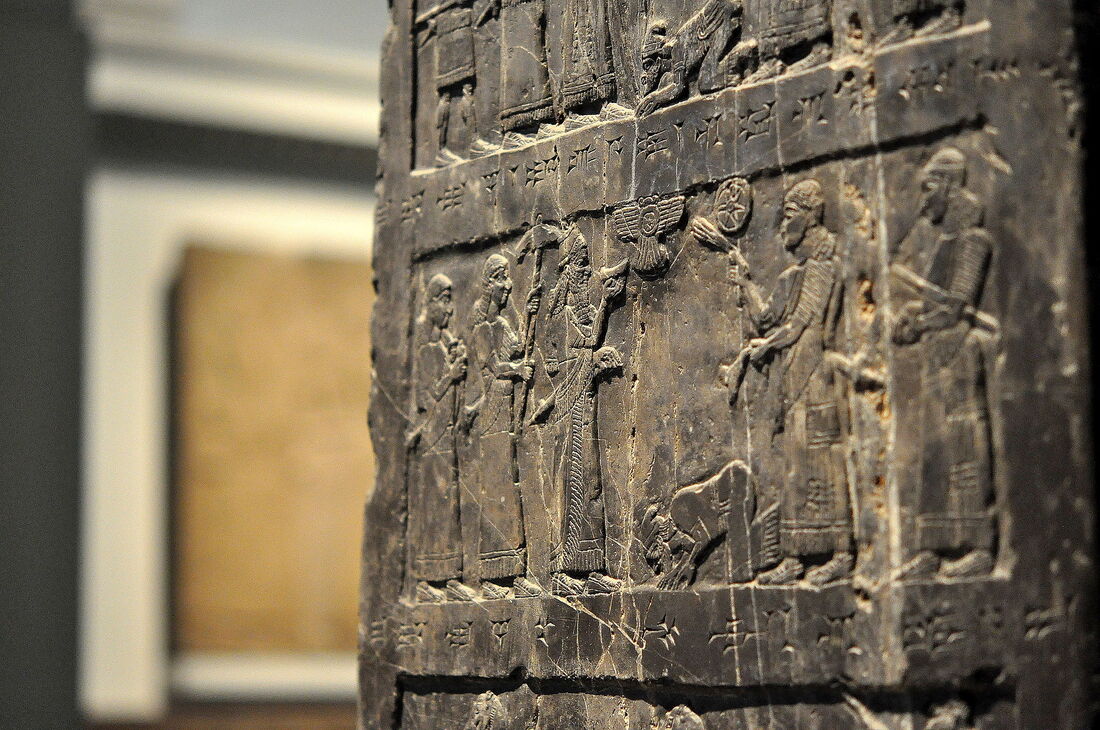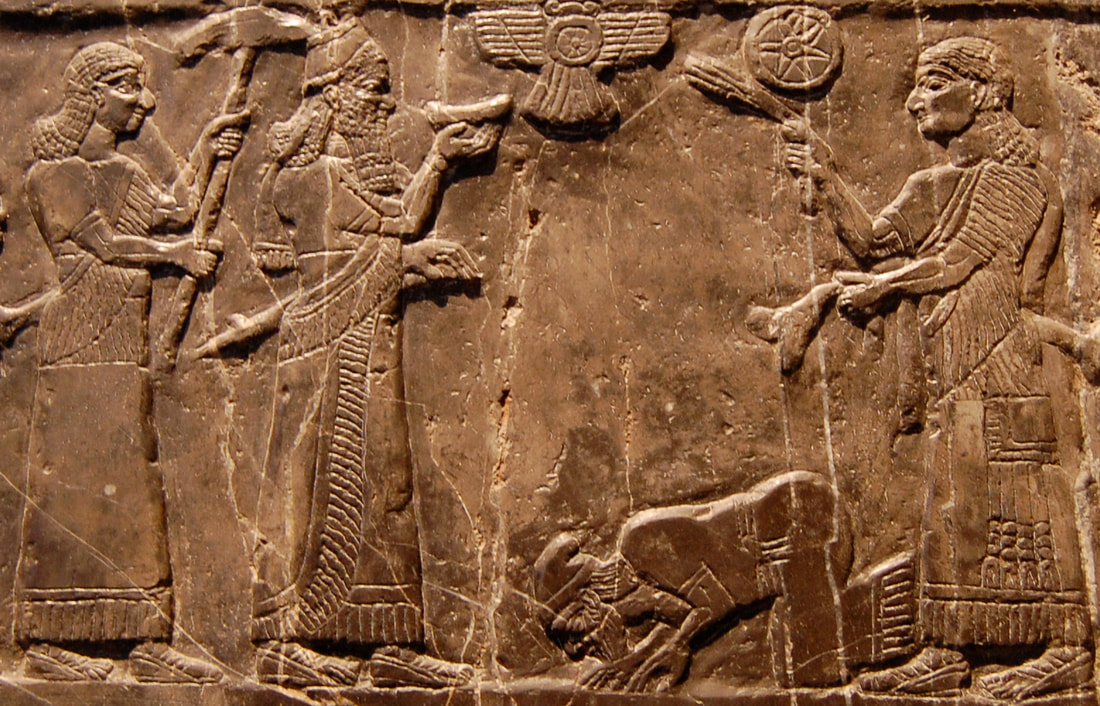|
The next archaeological discovery goes hand in hand with the our number 7 from yesterday. In fact the object in question concerns the very same king who battled Ahab at Qarqar. Found in the ancient city of Nimrud, the Black Obelisk of Shalmaneser III is another monument describing the Assyrian king’s reign in the Ancient Near East. It contains four registers which each scene continues around the object, 360 degrees. The contain scenes of hunts, wild and exotic animals, and two foreign kings bringing tribute to the Shalmaneser III in his throne room. This object is important for biblical studies because it is the only pictorial representation of an Israelite king, Jehu. In my last post I mentioned how the Kurhk Monoliths show the conflict between the West Semitic kings and Shalmaneser III in Assyria. Jehu, formed a coup d'etat against the house of Ahab and had his queen, Jezebel killed. The very next event is not mentioned in the Bible but it assumed to have happened, in that Jehu pledges allegiance to Shalmaneser III, the very king in which Ahab was at war with during his reign. Jehu is in the second register in which he is shown, surrounded by Assyrian officials and bowing down to Shalmaneser III. Below this scene is written in Akkadian, “Jehu of the House of Omri.” It is interesting that in the identification of King Jehu of Israel, he is not in fact from the Omride Dynasty. This is most likely an example of foreign empires addressing the nation according to its most powerful or famous dynasty.
Further along the second register going 360 degrees also shows what appear to be other Israelites forming a procession and carrying tributes to the king. This was a common practice in the ANE where a smaller kingdom would pay tribute or taxes to a major empire in hopes of reaping the benefits of said empire. In this case the Israelites were allowed their independence but were under the protection of the Assyrian Empire from the looming threat of the growing Arameans to the north. Obviously this treaty formed between the two kingdoms only went well for Assyria since Israel was later exiled in 722 BCE in which the alliance put the southern Kingdom of Judah in danger as well as we saw with the Annals of Sennacherib. Tune in tomorrow for number 5 as we are 5 days away from Christmas! -Tal
1 Comment
Leave a Reply. |
Archives
June 2021
Categories
All
|


 RSS Feed
RSS Feed